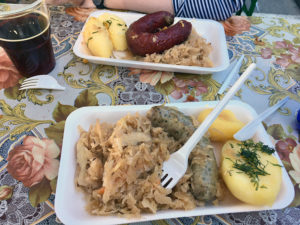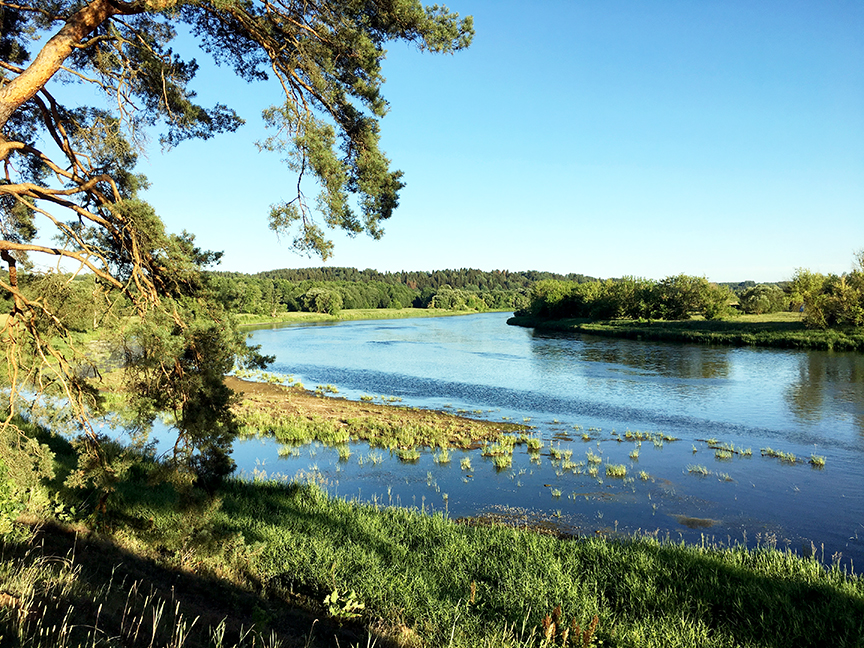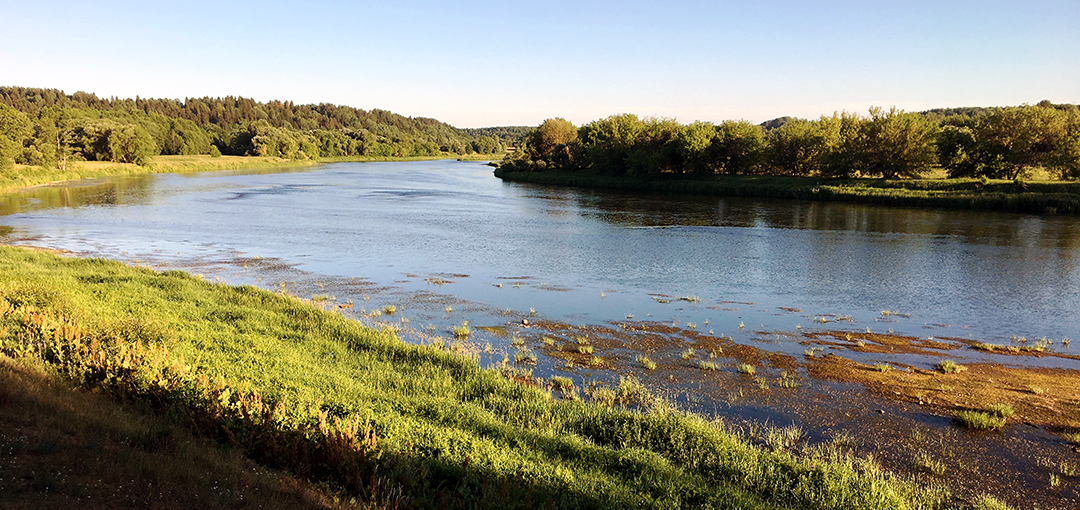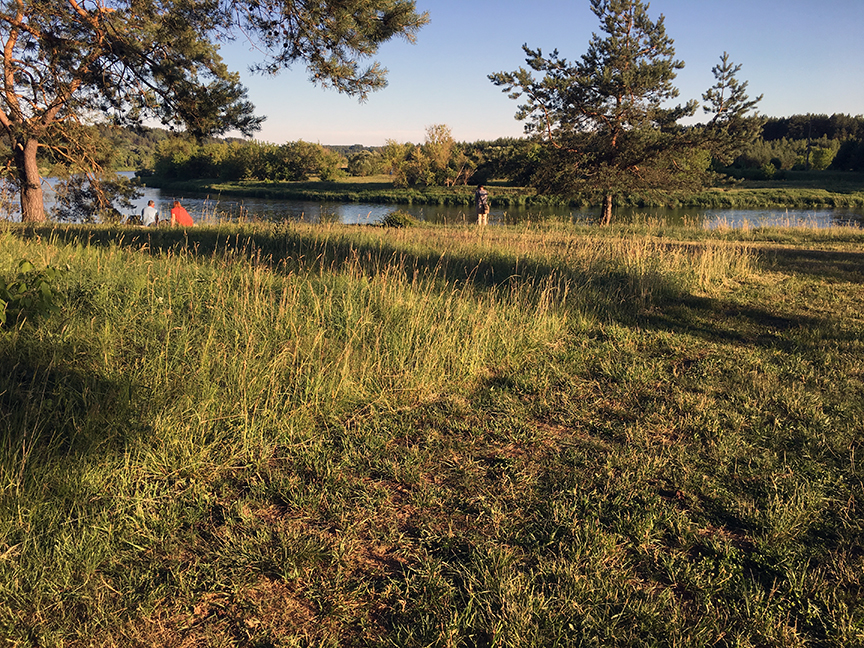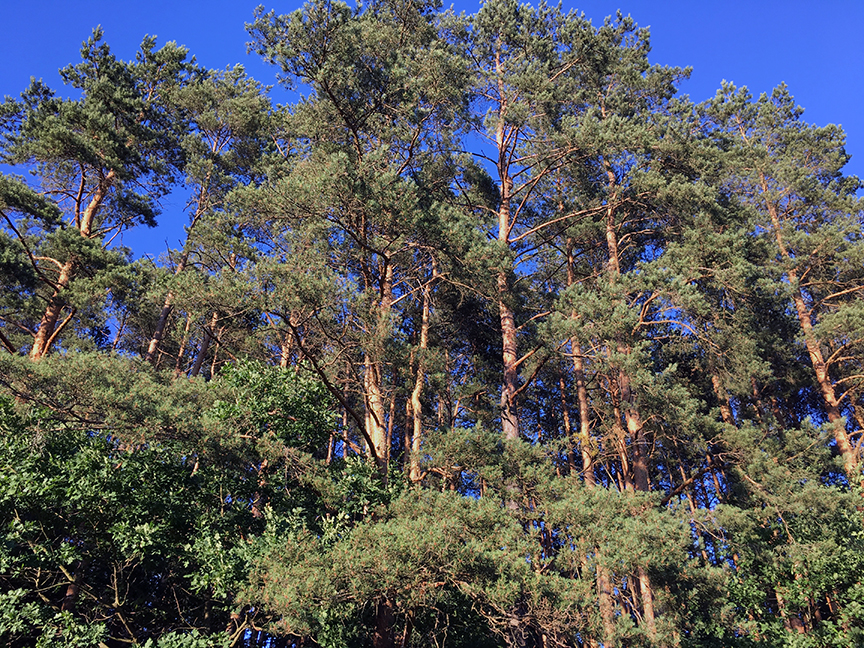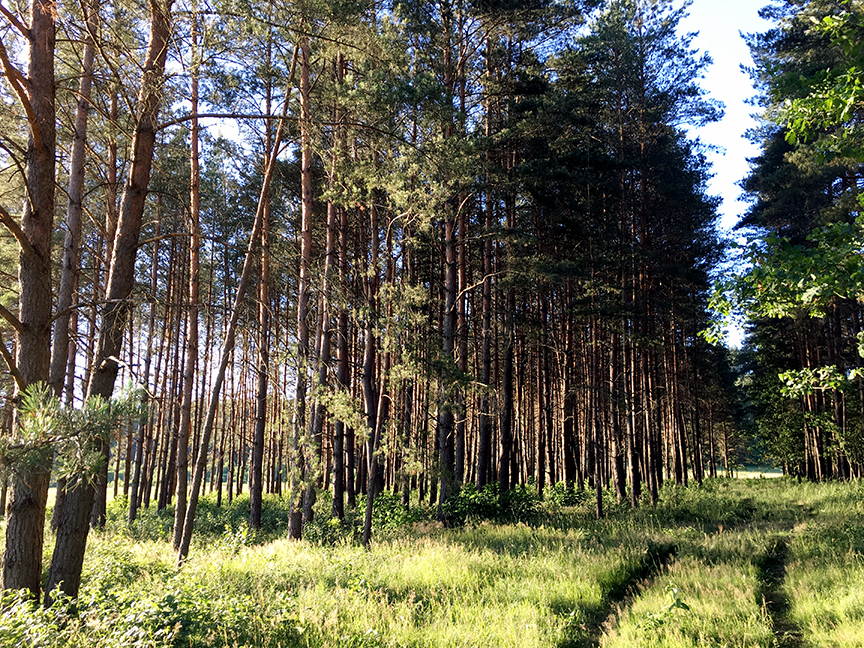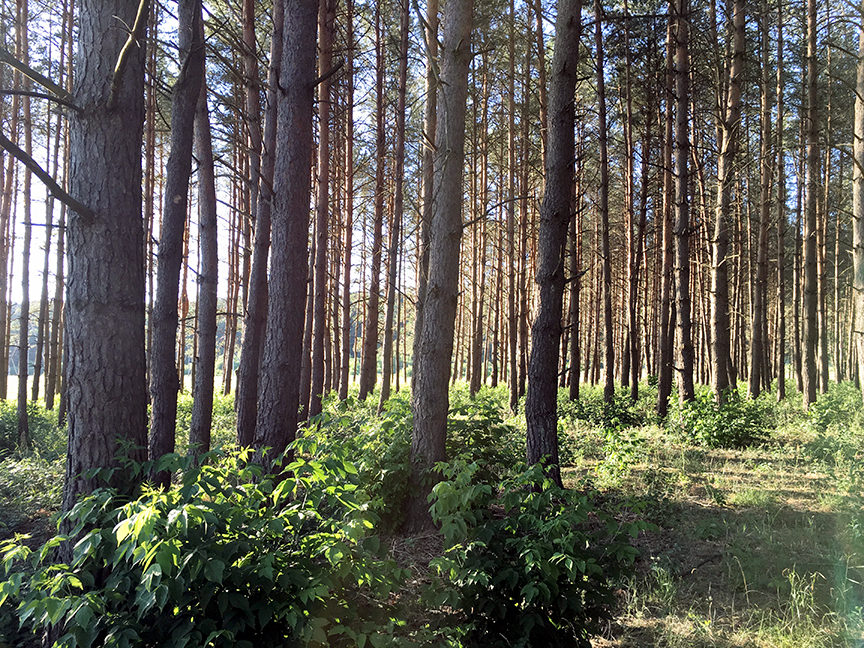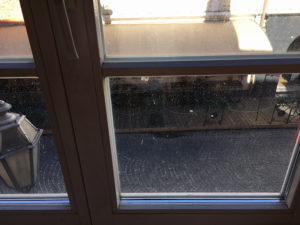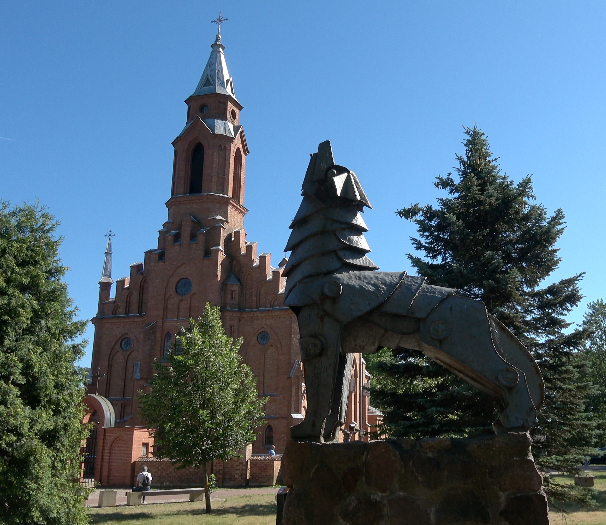
St. Jonas’s Day was celebrated on Sunday, 23 June, throughout Lithuania. Also known as Rasa or Rasos (Dew Holiday) and Jonines, it marks mid-summer, the longest day of the year. (Sunset was at 10:03 pm, sunrise at 4:43 am) Lithuanians are known for celebrating the day in special ways, and at probably nowhere more special than the ancient capital of Kernave.
We drove from the Curonian Spit to Kernave, arriving late afternoon. The festivities there go on into the night and, for many, until morning. As we got there much earlier than most, we were able to park only a couple of hundred yards from the entrance, at a private residence making a few extra euros. Fewer than 300 people are residents of the town.
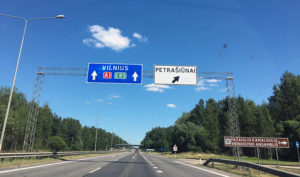
The rest of Kernave is a cultural reserve, an archaeological site, and yet another UNESCO World Heritage Site. About 20 miles northwest of Vilnius, it is located in the valley of the River Neris. The site contains evidence of human settlements spanning about 10,000 years. Only a very small percentage of the reserve’s 480 acres has been excavated archaeologically.
In the 13th century, Kernave was considered an important feudal town of craftsmen and merchants and served as the capital of the Grand Duchy of Lithuania. To protect it, Lithuania built a complex defense system of five hill forts. Yet it yielded to Teutonic Knights in the late 14th century.
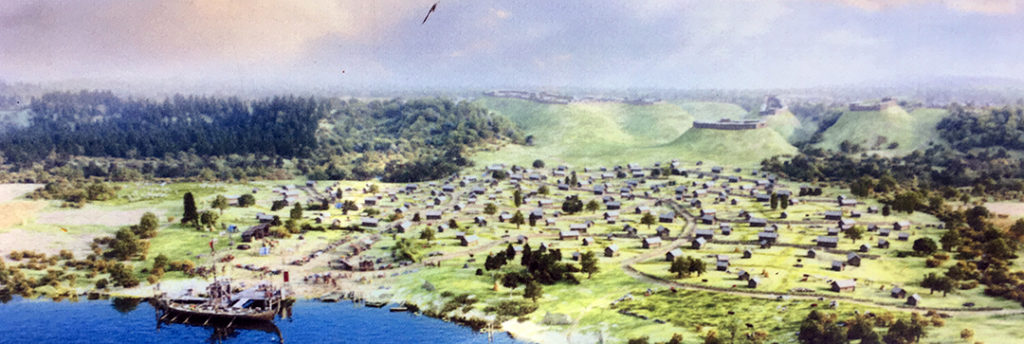
The entrance to the festival was lined with booths offering arts and crafts, and lots of alus (beer). Here’s video (2:01) of some of that.
One of the exhibits at the reserve is an “open-air museum,” reconstruction of a 13th-14th century craftsmen village. Here’s video (1:13).
A section of the festival offered lots of food and beer options. We ate dinner there and chose traditional fare.
While the crest of the hill forts was crowded and busy, the area closer to the river was more peaceful and bucolic. As we walked down to the riverside, we saw youngsters gathering wildflowers to make a crown. One of the traditions, I believe, is for girls and young women to wear crowns of flowers and boys and young men to wear wreaths of oak branches. As night approaches, single young women and men throw their wreaths into the river. If a flower wreath and oak branch wreath float together, it means the couple will marry before the end of the year. (The tradition of wearing flower crowns remains strong and appears not to be limited to young or single folk.)
Here’s a gallery of scenes at the riverside.
Here’s video (1:22) of going down to the riverside and at the riverside.
As evening progressed, the hillsides filled with music and dance. Here’s video (2:36).
At first, we thought we would stay until the bonfires, etc., which were scheduled to be lit at 11 pm. Soon after 10, however, we decided to head back to Old Town Vilnius. It had been a long day.
Thank goodness we made that decision. As we left the town of Kernave, we saw that cars had parked on both sides of the narrow street, forcing only one lane and one-way traffic, fortunately the way we were going. At the nearest intersection, police had closed the turn to incoming traffic. We drove for a couple of miles, at least, past stopped bumper-to-bumper traffic. I cannot imagine how difficult it would have been to leave later. Almost gives an incentive to stay through the night.
The next morning, the street outside our apartment, normally filled with people, was pretty empty at around 8:30 am. Seemed as if quite a few people stayed up late on Midsummer Day.
Lithuania, part VI: Zervynos and a generation found


